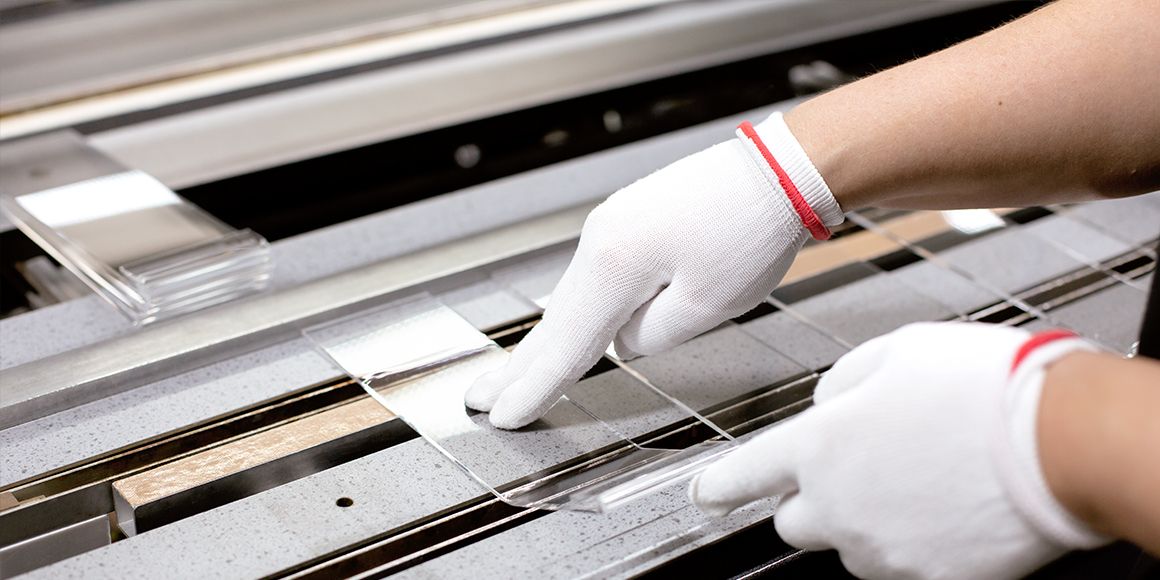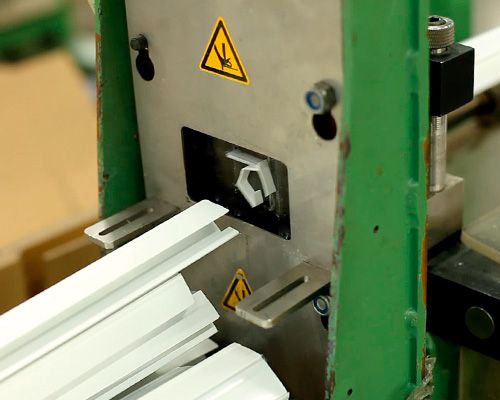Thermoplastics
Thermoplastics are plastics that can be melted and reshaped indefinitely under the influence of heat and pressure, and then solidifies once cooled. The process is called thermoplastic forming.
Thermoplastics do not go through a chemical change when being heated and shaped. Instead they retain their originial properties, even after undergoing the heating and forming process repeatedly.
Some examples of thermoplastics include: Acrylic, PET, Polycarbonate (PC), Polypropylene (PP), Polystyrene (PS), and Polyvinyl chloride (PVC).
Advantages of Using Thermoplastics
- The ability to be repeatedly heated and shaped
- Strength to Weight Ratio
- Chemical resistance
- Versatile
- Recyclable
Because thermoplastics have the ability to keep their chemical properties after being heated and shaped, means that they can be re-heated and re-shaped indefinitely.
They are also very versatile. This kind of plastic can be formed into many shapes and sizes, and can be made transparent, opaque, or translucent.
Thermoplastics are also able to be recycled, helping reduce waste and the environmental impact of manufacturing.
It is important for many reasons that a product be both strong and lightweight. Thermoplastics give products this possibility. Being lightweight is helpful for both the customer for mobility, as well as for shipping to keep costs low.


Common Techniques for Heating and Forming:
Here are some common techniques in which thermoplastics can be heated and formed into different sizes and shapes:- Blow Moulding - thermoplastic is melted and formed into a tube, where it is then inflated into the desired form. This techniques is often used to make bottles
- Extrusion - the thermoplastic is melted and forced through a die to create a continuous shape. These shapes can include tube or sheet forms and can then be cut into their desired sizes
- High-Frequency Welding - the joining together of thermoplastic by high frequency electromagnetic energy. The pieces of thermoplastics are placed between two electrodes, and once the high frequency energy is applied, the energy causes the materials to heat and fuse together. After the electrodes are removed, a strong weld has been formed.
- Injection Moulding - the thermoplastic is melted and injected into a mould. It is then cooled and solidifies into its the desired end form
- Thermoforming - refers to a method in which a pre-heated thermoplatic sheet is deformed using a tool with the aid of pressure and a vacuum. A distinction is made between positive and negative forms, depends on whether the plastic sheet is formed on the tool side or away from the tool
The specific techniques used for a product will depend on the plastic being used, and the desired shape and intended application for the final product.
